
A trademark clearance search is usually done before you file a trademark application. Its main purpose is to search for prior registered or applied marks that are similar to your mark and used over the same or similar goods and/or services.
After your mark is filed, the China Trademark Office (“CTMO”) examiner conducts a trademark search for conflicting marks during the substantive examination stage to determine whether there is a conflict between your mark and a prior mark that is either registered or pending in the CTMO. One of the main factors in determining whether a mark should be approved or rejected for registration is to assess the similarity between the marks and the similarity between the goods or services designated by the marks. It is considered that co-existence of similar marks over similar goods or services create a likelihood of confusion among the consumers. When there is a likelihood of confusion, consumers may mistakenly believe that the goods or services designated come from the same source or their applicants have certain relationship, and the CTMO will reject your mark for registration.
Generally, if the CTMO can find the conflicting mark which may lead to the rejection of your mark, we can find the conflicting mark too, before filing. So, if you conduct the prior clearance search revealing a mark that will block yours and then you decide to register a different mark instead, you will save yourself thousands of money, months of time, and lots of frustration over the CTMO rejection.
The official public database for a trademark search is the CTMO online database. It is a database of every Chinese trademark that has been registered or applied for. The record of a mark lists the mark’s basic information, including the application number, the mark, the filing date, the name and address of the applicant, etc.. However, please note that the CTMO does not provide advisory opinions about whether a possible conflicting application revealed in a search will be a barrier to registration before your filing.
Trademark clearance search can be a complex process; the assessment of the similarities of marks requires knowledge of China Trademark Law, criteria on trademark similarity comparison, the relevant regulations of trademarks and Chinese culture, so you may want to hire an experienced trademark attorney to help you navigate this process.. Your attorney will be able to help you make the determination of whether or not a likelihood of confusion exists with your mark. In addition, your attorney will tell you the inherent distinctiveness of your mark, which cannot be obtained from the search in the CTMO online database.
Kangxin Partners, P.C., are always here to help you with a full range of trademark matters, including trademark clearance search. We would also like to introduce our Kangxin eService Platform for trademark matters, using which will allow you to conduct trademark clearance search based on Artificial Intelligence technology, instruct us on new matters (such as new trademark application, renewal, trademark registration, etc.) through an online portal and manage your trademark portfolio timely, easily, and clearly. We are continuously adding functionality to the platform as well. Access the platform now at Kangxin eService Platform.
Below is a brief demonstration on using the Kangxin eService Platform to do a trademark clearance search.
Take the clearance search for the marks “google” and “![]() ” in Class 3 for example. You will see the process step by step below.
” in Class 3 for example. You will see the process step by step below.
1. The page of the trademark clearance search
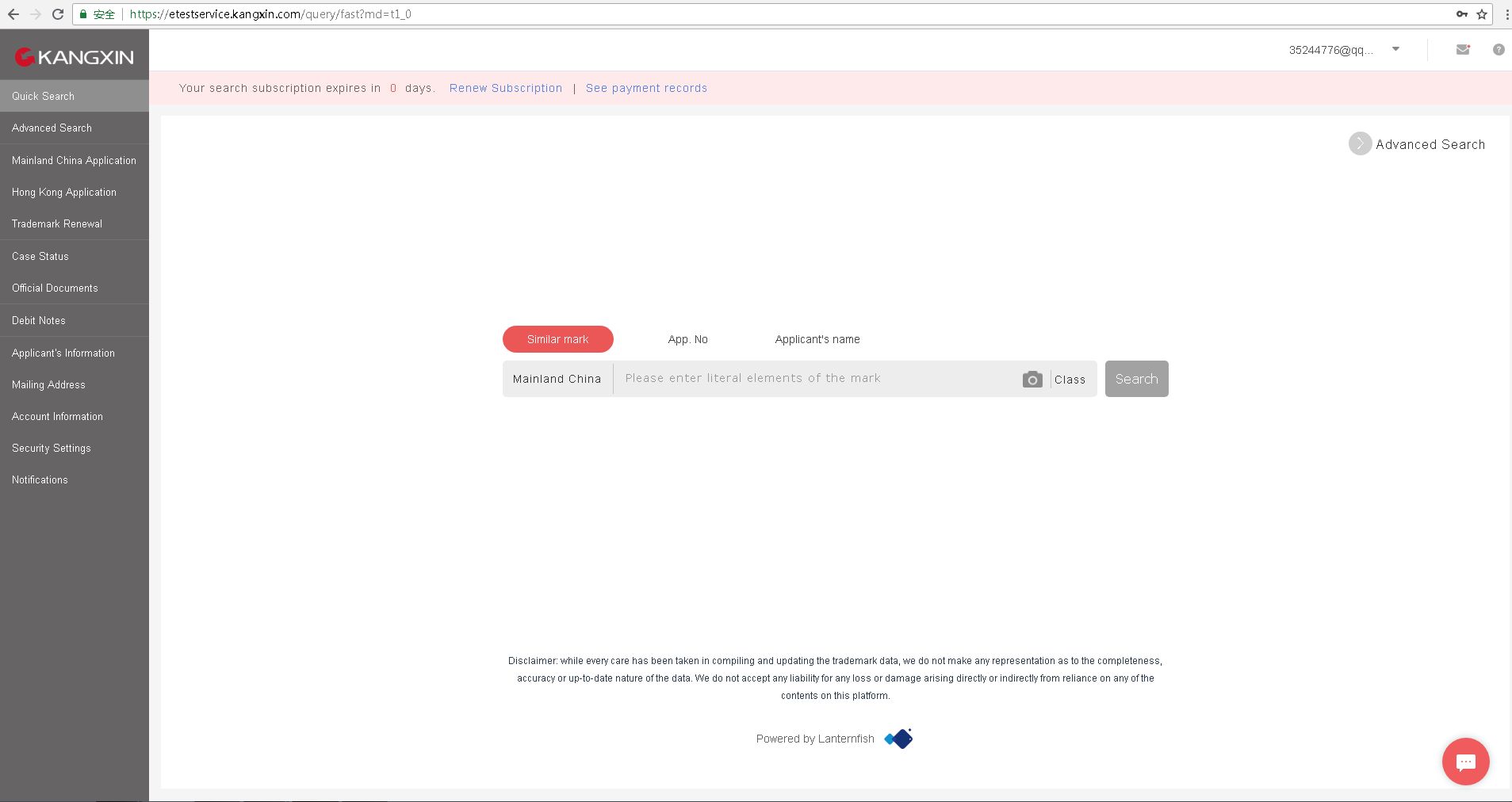
1. Enter the mark “google” and click class to choose “3”
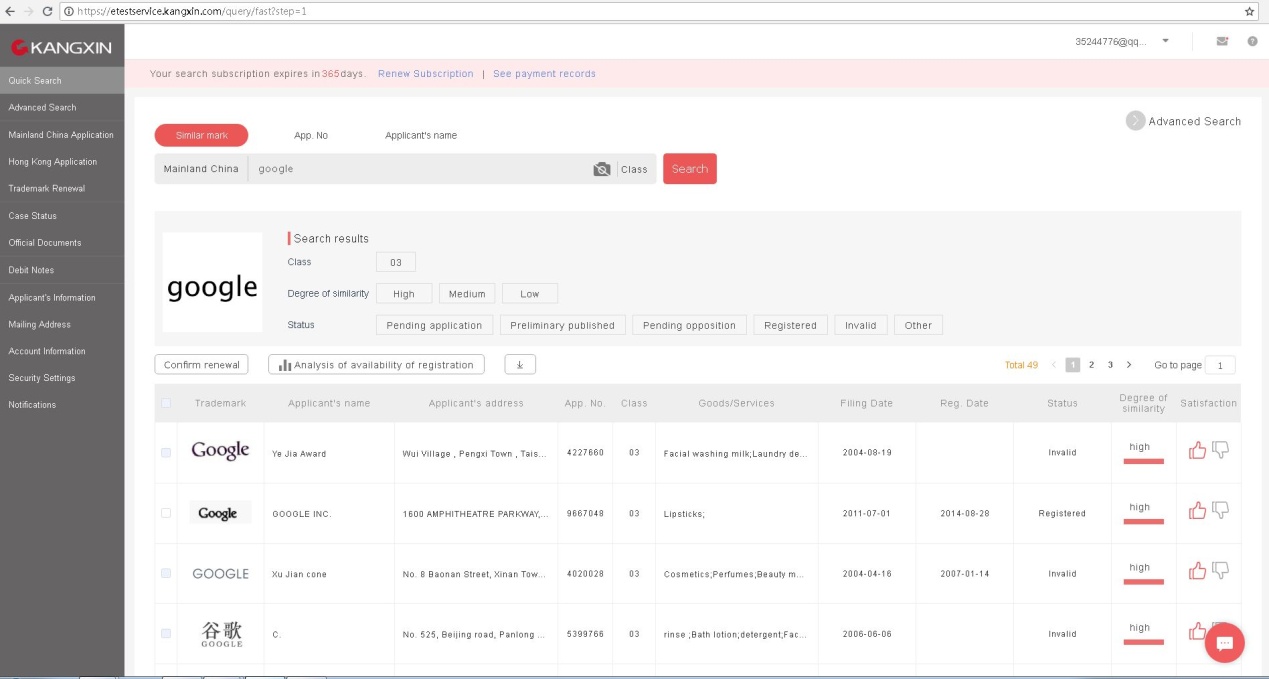
Click the button  to upload the device mark,
to upload the device mark, ![]() , and click the class to choose “3”
, and click the class to choose “3”
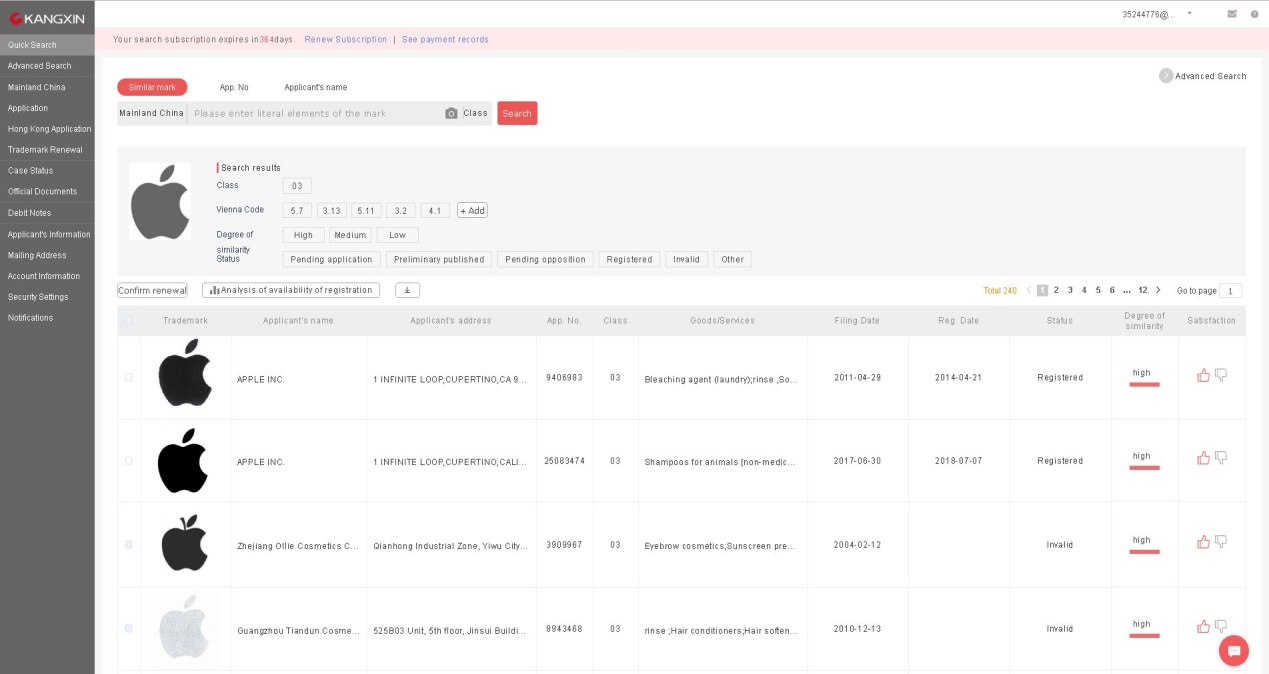
2. Click “analysis of availability of registration” to order a search report
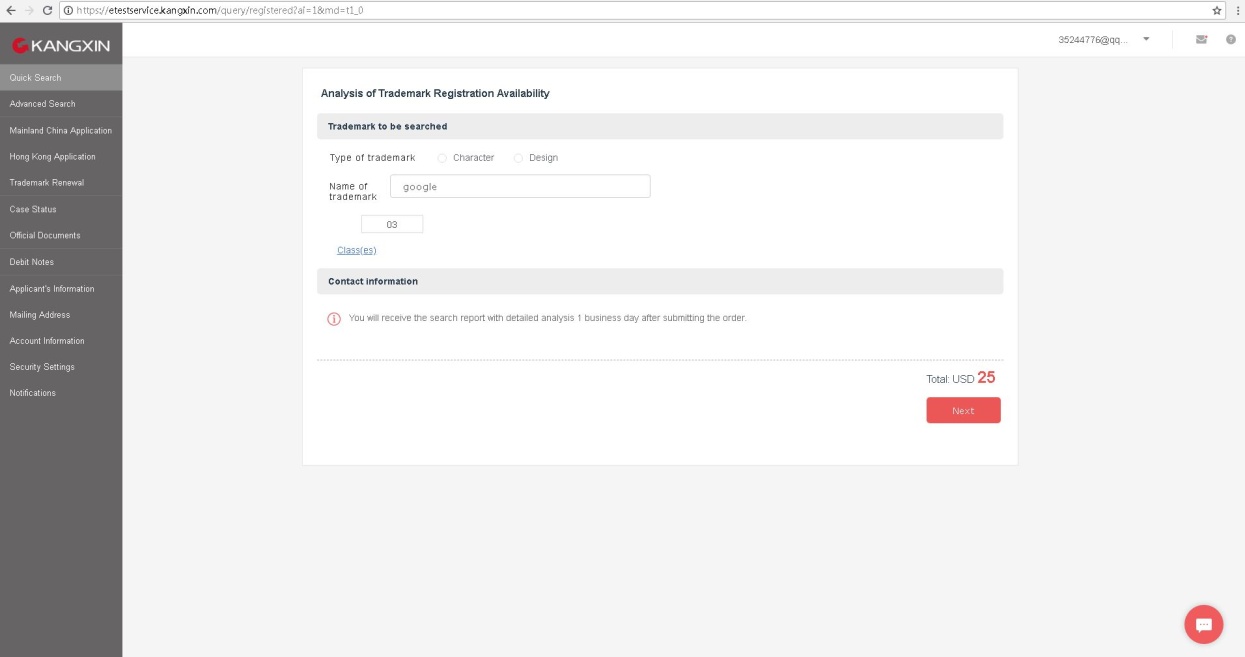
3. Confirm the order and pay
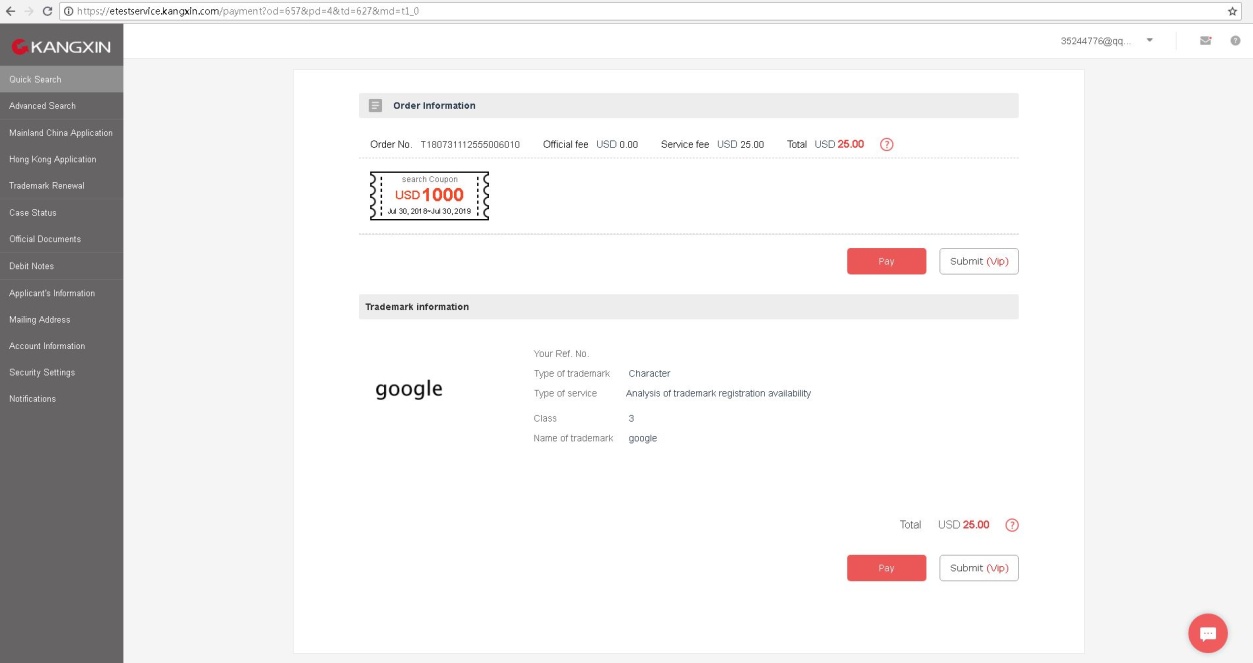
4. Order successfully submitted
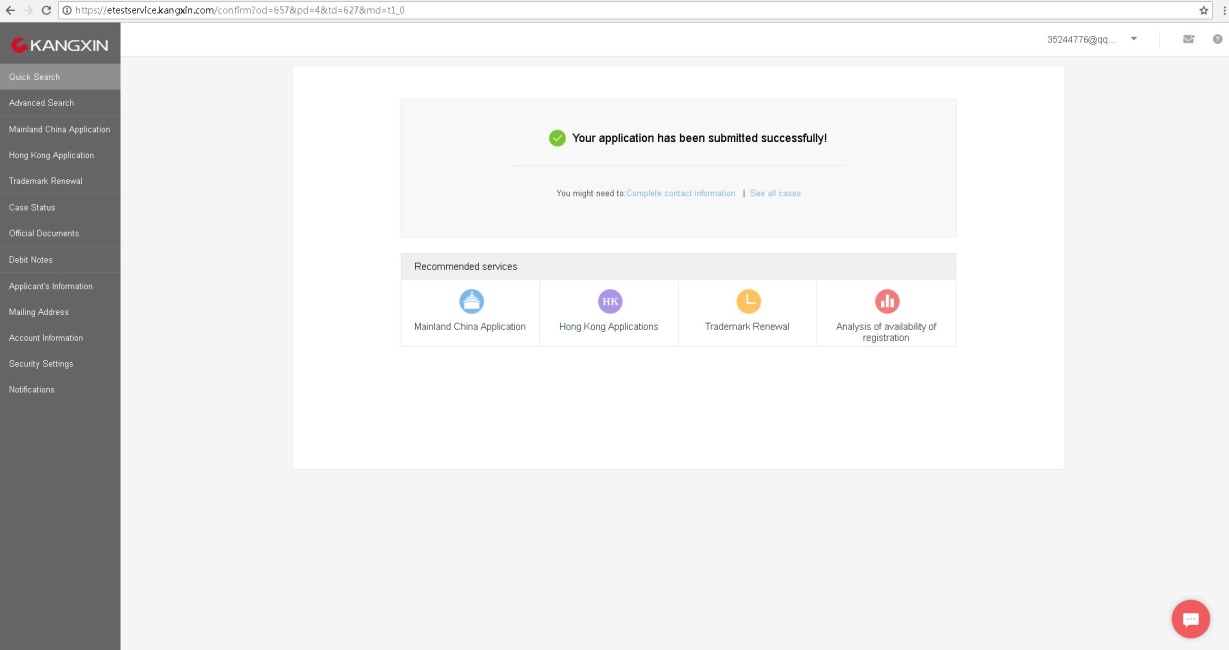
After the above five steps are completed, we will provide you the detailed search report within 1 working day. Below you may see the main contents of our search report.
1. Search Results
1.1 Registration
- Absolute Grounds (General Requirements)
- Relative Grounds (Availability)
1.2 Use
2. Cited Mark Details & Analysis & Actions
Even if your search might come up clean, it does not necessarily lead to a successful registration. Inherent distinctiveness of the mark is another important factor that should be taken into consideration. In our search report, we will analyze whether the mark directly indicates the function or features of the designated goods or services in that class, or includes any element that cannot be used as a trademark, or includes any public known geographical names, and etc.
- Similarity of marks
To determine whether a likelihood of confusion exists, the marks are first examined for their similarities and differences. We will make a comprehensive analysis of the pronunciation, shape, meaning and overall appearance of the marks. Note that in order to find a likelihood of confusion, the marks do not have to be identical. Similarity in pronunciation, shape, meaning or overall appearance may be sufficient to support a finding of likelihood of confusion. The following are some examples of marks that would be considered similar:
Sound
![]()
![]()
Although spelled differently, the marks sound alike.
Appearance
![]()
The shape of the letters and numbers are similar.
Meaning
![]()
The meaning of “TWO” and “Ⅱ” are the same.
Overall appearance

Because the marks include the similar design element, and they create a similar overall impression, even though the one on the left also includes words plus the design.
- Similarity of goods
Even if two marks are found to be confusingly similar, a likelihood of confusion will exist only if the goods and/or services upon which or in conjunction with the marks are used are similar to each other. To determine the similarity of goods, the goods/services are not required to be exactly the same. The CTMO and the Trademark Review of Adjudication Board (“TRAB”) mainly follow the Chinese Classification of Goods and Services, a guide book classifying the goods and services into 45 classes. Each class can cover a wide range of goods or services. For example, Class 25 covers clothing, shoes and hats, and Class 36 covers insurance and financial services. Each class is further divided into several subclasses. Generally, goods or services falling into the same subclass are considered similar to each other.
What to search and how to interpret the search results can be very complicated. There are many factors to consider in determining the likelihood of confusion and whether your mark is inherently distinctive to sufficiently function as a trademark. We as trademark attorneys can help you avoid costly legal problems by conducting a comprehensive trademark search before filing your application, thus increasing your chance of successful trademark registration, and help you enforce your trademark rights in China.


Follow us






